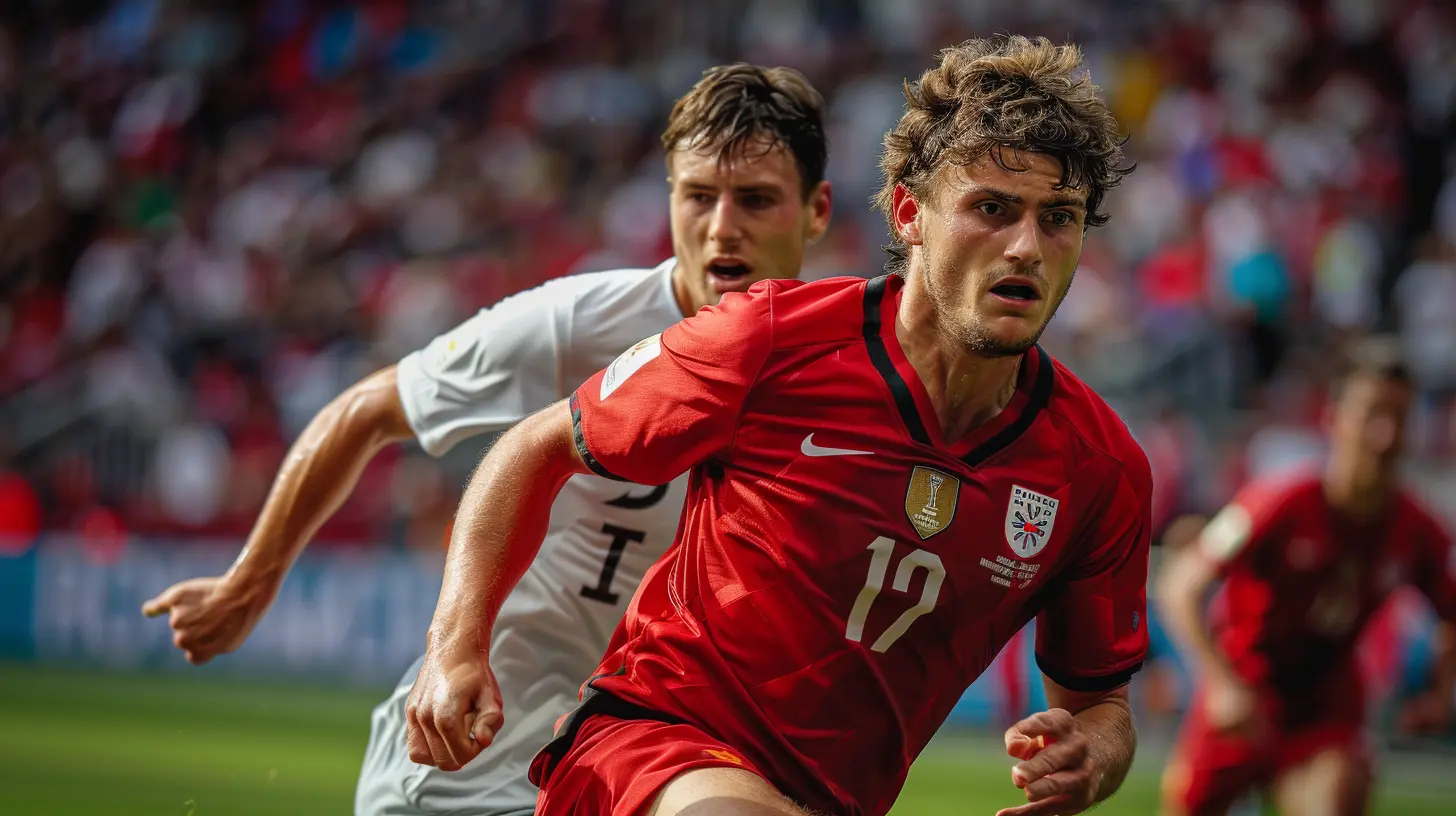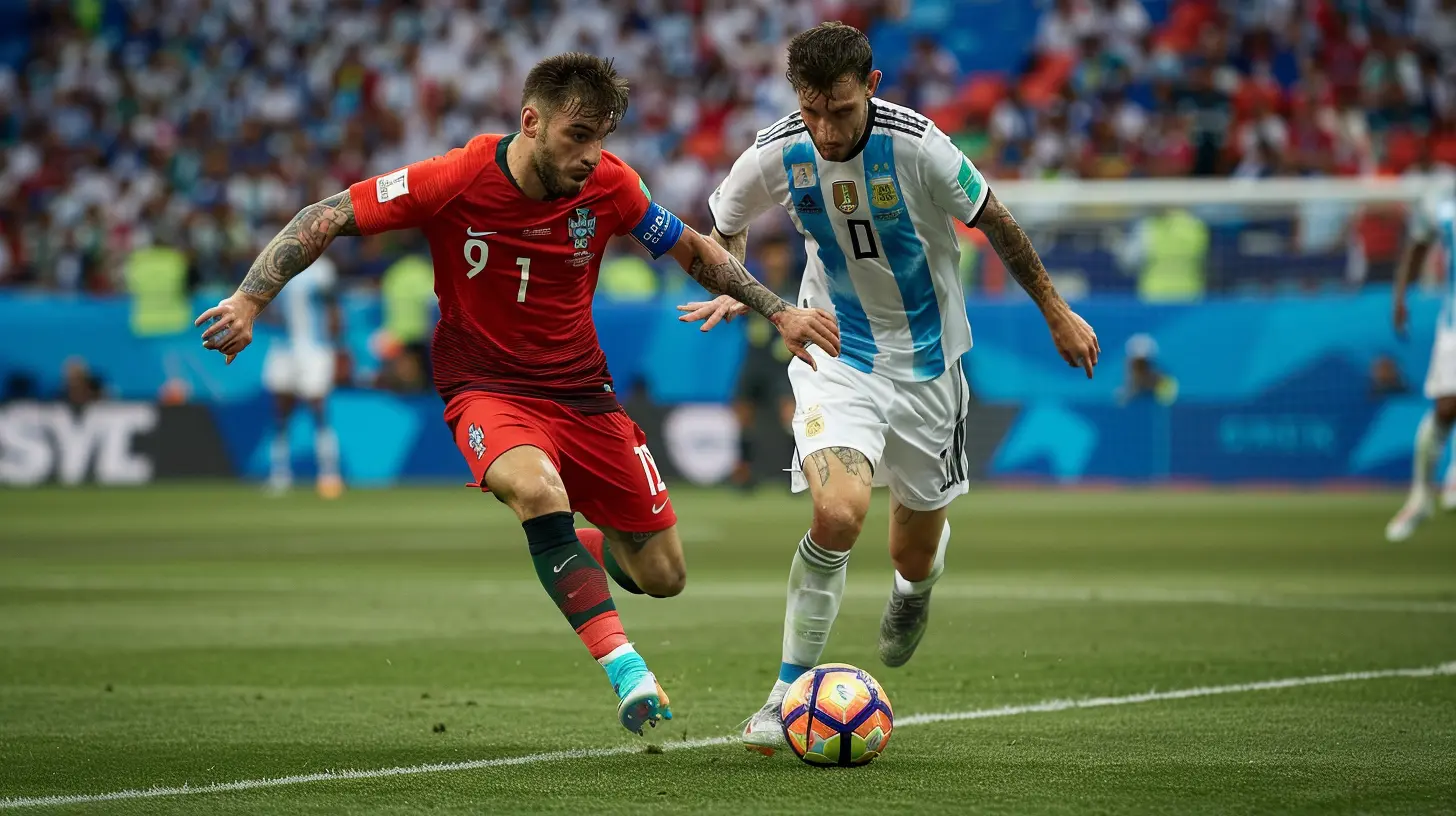20 November 2024
In the world of soccer, few things are as exhilarating as a perfectly executed counter-attack. It’s like watching a well-rehearsed orchestra perform an impromptu piece of music. One moment, the opposing team is pressing hard, dominating possession. The next, your team is streaking down the field, seemingly out of nowhere, and before the other side knows what's hit them, the ball is resting in the back of their net.
But what makes the counter-attack so effective? Is it just about raw speed, or is there a deeper strategy at play? In this article, we’ll break down the three core elements of a successful counter-attack: speed, precision, and timing. By the end, you’ll understand why these factors make the counter-attack not just a tactic, but an art form.

The Essence of the Counter-Attack
Before diving into the nitty-gritty details, let’s first establish what a counter-attack is. At its core, a counter-attack is a quick transition from defense to offense immediately after regaining possession of the ball. While the opposing team is caught off-guard, typically while they're pushed upfield in an attacking position, your team takes advantage of the open spaces left behind.Sounds simple, right? Not quite.
While it may seem like a straightforward strategy, executing a counter-attack at the highest level requires a perfect blend of several elements. It’s like baking a cake—missing just one ingredient can ruin the entire dish. The same goes for counter-attacking in soccer. You need speed to exploit space, precision to move the ball effectively, and timing to ensure everything clicks when it matters most.
Let’s break these down one by one.

1. Speed: The Engine of the Counter-Attack
Why Speed Matters
Speed is the heartbeat of any counter-attack. If you’re too slow, the opposing team will have time to regroup, get back into their defensive shape, and neutralize your efforts. But if you can move the ball quickly and decisively, you can catch them off balance and create high-quality scoring opportunities.Think of speed as the gas pedal in a car chase. The faster you can go, the harder it is for your opponent to stay on your tail. In soccer, that chase happens in the form of sprinting players, fast ball movement, and split-second decisions.
Quick Transitions
The moment your team regains possession is critical. Whether it’s a turnover from a tackle, interception, or a goalkeeper’s save, the first few seconds are the golden window of opportunity. A clever counter-attacking team will immediately look to exploit the disorganization of the opposition.This means getting the ball forward as quickly as possible, often with long, vertical passes up the field or rapid one-touch passes. Wingers and forwards need to sprint into space, stretching the defense and creating gaps.
Speedy Players
Having fast players isn't just a luxury in counter-attacking; it’s almost a necessity. Speedsters like Kylian Mbappé, Mohamed Salah, or Alphonso Davies are prime examples of players who thrive in counter-attacking situations. Their blistering pace allows them to break away from defenders and make the most of any available space.But it’s not just about pace in running. Speed of thought is equally important. Players need to make quick decisions: when to pass, when to dribble, and when to shoot. A slow thinker, even with fast feet, can kill a counter-attack before it even starts.

2. Precision: The Glue That Holds It Together
The Importance of Accurate Passing
Speed is great, but if you can’t pass the ball accurately or make the right decisions, your counter-attack is going to fall apart. That’s where precision comes in. Precision ensures that your quick transitions and fast runs don’t go to waste.When we talk about precision in counter-attacks, we're mainly referring to passing. The ball needs to move quickly and accurately. A misplaced pass can ruin the momentum, allowing the opposition to recover. On the other hand, a perfectly placed ball can tear open the defense and lead to a clear scoring chance.
One-Touch Passing
One-touches. That’s the holy grail of counter-attacking precision. In many situations, there’s no time to take multiple touches or look around for options. Players need to know where their teammates are, and the ball needs to move from player to player seamlessly. The faster and more precise your passing, the harder it is for the opposition to react.There’s a beautiful simplicity to one-touch soccer. The ball does the work, players keep moving, and the defense is left chasing shadows. It’s like a well-rehearsed dance, where everyone knows their role and the timing is impeccable.
Dribbling with Purpose
While passing is a crucial part of precision, let’s not forget about dribbling. In counter-attacks, dribbling isn’t about showing off fancy footwork or taking on multiple defenders. It’s about getting from point A to point B as efficiently as possible. Players who can dribble at pace—think of Eden Hazard or Neymar—are invaluable in counter-attacking situations.Dribbling with purpose means driving towards space, committing defenders, and creating passing lanes for teammates. It’s about keeping the ball close and making smart decisions, rather than trying to beat the entire defense on your own.

3. Timing: The Unsung Hero of Counter-Attacking
Why Timing is Everything
Imagine you’re a forward making a run down the field. You’re faster than the defender marking you, and you know that if you can just get the ball in the right moment, you’ll be through on goal. But if the pass comes too early, the defender cuts it out. If it comes too late, you’re offside or the defense has recovered. That’s where timing comes in.In soccer, timing is often the difference between success and failure. And nowhere is that more true than in counter-attacking. Timing dictates when to release the pass, when to make the run, and when to take the shot. Get it wrong, and the opportunity is gone. Get it right, and you’ve got a clear path to goal.
Timing of Runs
Forwards need to anticipate when the ball is going to be played and time their runs accordingly. If they start too early, they risk being offside, killing the momentum. If they start too late, the window of opportunity closes. The best forwards—like Robert Lewandowski or Harry Kane—have an almost innate sense of when to make their runs.Timing of Passes
The pass also needs to be perfectly timed. Midfielders and defenders launching the counter-attack need to release the ball at the right moment, ensuring that it reaches the forward while they’re still in stride. A delayed pass can give the defense time to shut down the attack, while a rushed pass can result in a turnover.Timing in Decision-Making
Finally, there’s the timing of decision-making. Soccer is a game of split-second decisions. In a counter-attack, players don’t have the luxury of time. They need to assess the situation and decide what to do almost instinctively. Should they pass or dribble? Should they shoot or hold onto the ball? The best players make these decisions quickly and confidently, without hesitation.The Role of the Goalkeeper in a Counter-Attack
We often think of counter-attacks as starting with the midfield or defense, but the goalkeeper plays a crucial role as well. A quick distribution from the keeper can set off a counter-attack in motion. Whether it’s a long throw, a fast kick, or even a quick short pass to a defender, the goalkeeper’s decision-making and distribution can be the catalyst for a successful counter.Some of the best counter-attacking teams have goalkeepers who excel at this. Manuel Neuer, for example, is known for his ability to start counter-attacks with his quick and accurate distribution. When the goalkeeper is alert and proactive, the entire team benefits.
Conclusion: The Art of the Counter-Attack
Counter-attacking soccer is a thing of beauty. It’s fast, dynamic, and thrilling to watch. But behind that excitement is a carefully orchestrated plan that revolves around three key elements: speed, precision, and timing.Speed allows you to exploit the gaps left by the opposition. Precision ensures you move the ball effectively and make the most of your chances. And timing ties it all together, making sure that everything happens at exactly the right moment.
When these elements come together, the result is often a goal, leaving the opposing team scratching their heads, wondering how they went from attacking to picking the ball out of their net in just a few seconds. And that, my friends, is the magic of the perfect counter-attack.













Fallon McElhinney
This article brilliantly encapsulates the essence of a perfect counter-attack. The emphasis on speed, precision, and timing reveals the intricacies of executing a successful play. It's a must-read for coaches and players aiming to refine their game strategy. Well done!
February 2, 2025 at 9:55 PM